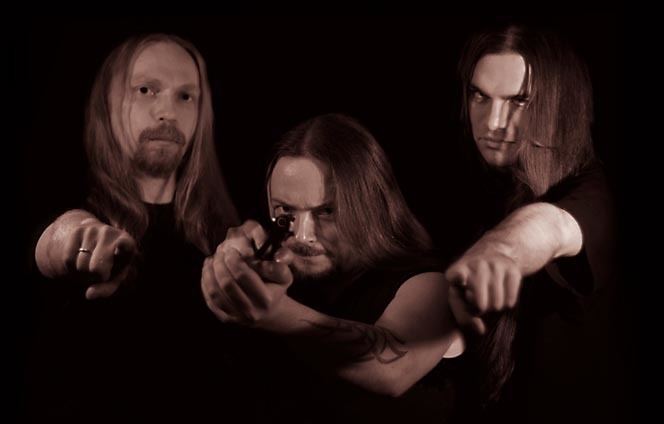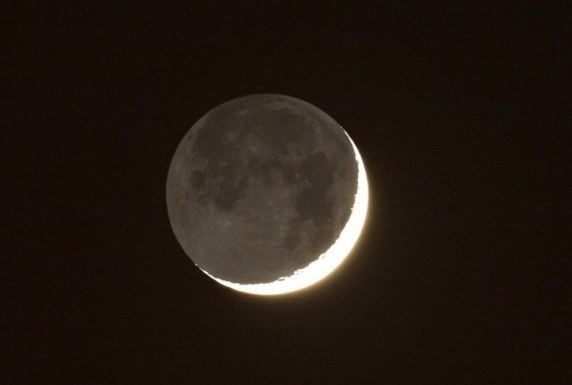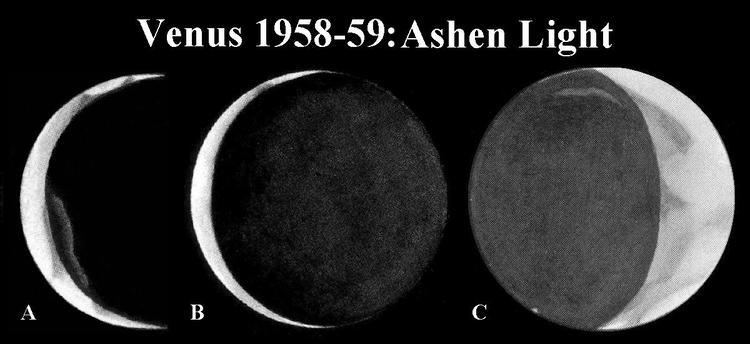 | ||
Ashen light full album
Ashen light is a hypothesised subtle glow that has been claimed to be seen on the night side of the planet Venus. The phenomenon has not been scientifically confirmed. Its potential causes remain disputed, but it may be associated with lightning on Venus.
Contents

Ashen light lesnaya carevna
History of observations

The ashen light was first reported by the astronomer Giovanni Battista Riccioli on 9 January 1643, and he named it "The Ashen Light of Venus." Subsequent claims have been made by various observers including Sir William Herschel, Sir Patrick Moore, Dale P. Cruikshank, and William K. Hartmann.

The ashen light has often been sighted when Venus is in the evening sky, when the evening terminator of the planet is toward the Earth. Observation attempts were made on 17 July 2001, when a 67% Venus reappeared from behind a 13% moon. None of the observers of this occurrence (including some using 61 cm 'Super RADOTS' telescopes) reported seeing the ashen light. Video from the event was captured, but the camera was too insensitive to detect even the earthshine.

A particularly favourable viewing opportunity occurred on 8 October 2015, with a 40% illuminated Venus reappearing from behind the unlit limb of a 15% sunlit Moon. The event was visible in dark skies throughout Central Australia and was recorded by David and Joan Dunham (of the International Occultation Timing Association) using a 10" f/4 Newtonian with a Watec 120N+ video camera from a location just north of Alice Springs. They also observed the event visually with an 8" SCT telescope. Neither the real-time visual observation nor close visual inspection of the video recording showed any sign of the dark side of Venus. While not conclusive, these observations suggest the ashen light is more likely attributable to telescope optics and eye physiology rather than atmospheric phenomena on Venus.
Hypotheses

The Keck telescope on Hawaii reported seeing a subtle green glow and suggested it could be produced as ultraviolet light from the Sun splits molecules of carbon dioxide (CO
2), known to be common in Venus' atmosphere, into carbon monoxide (CO) and oxygen (O
2), but the green light emitted as oxygen recombines to form O
2 is thought too faint to explain the effect, and it is too faint to have been observed with amateur telescopes.
In 1967, Venera 4 found the Venusian magnetic field to be much weaker than that of Earth. This magnetic field is induced by an interaction between the ionosphere and the solar wind, rather than by an internal dynamo in the core like the one inside Earth. Venus's small induced magnetosphere provides negligible protection to the atmosphere against cosmic radiation. This radiation may result in cloud-to-cloud lightning discharges.
It was hypothesized in 1957 by Urey and Brewer that CO+, CO+
2 and O−
2 ions produced by the ultraviolet radiation from the Sun were the cause of the glow. In 1969, it was hypothesized that the Ashen light is an auroral phenomena due to solar particle bombardment on the dark side of Venus.
Throughout the 1980s, it was thought that the cause of the glow was lightning on Venus. The Soviet Venera 9 and 10 orbiters obtained optical and electromagnetic evidence of lightning on Venus. Also, the Pioneer Venus Orbiter recorded visible airglow at Venus in 1978 strong enough to saturate its star sensor. The European Space Agency's Venus Express in 2007 detected whistler waves further confirming the occurrence of lightning on Venus. In 1990, Christopher T. Russell and J. L. Phillips gave further support to the lightning hypothesis, stating that if there are several strikes on the night side of the planet, in a sufficiently short period of time, the sequence may give off an overall glow in the skies of Venus.
However, a Monte Carlo simulation program, indicates that the lightning hypothesis as the cause of the glow is incorrect, as not enough light could be transmitted through the atmosphere to be seen from Earth. Observers have speculated it may be illusory, resulting from the physiological effect of observing a bright, crescent-shaped object. Some spacecraft looking for it have not been able to spot it — leading some astronomers to believe that it is just an enduring myth.
